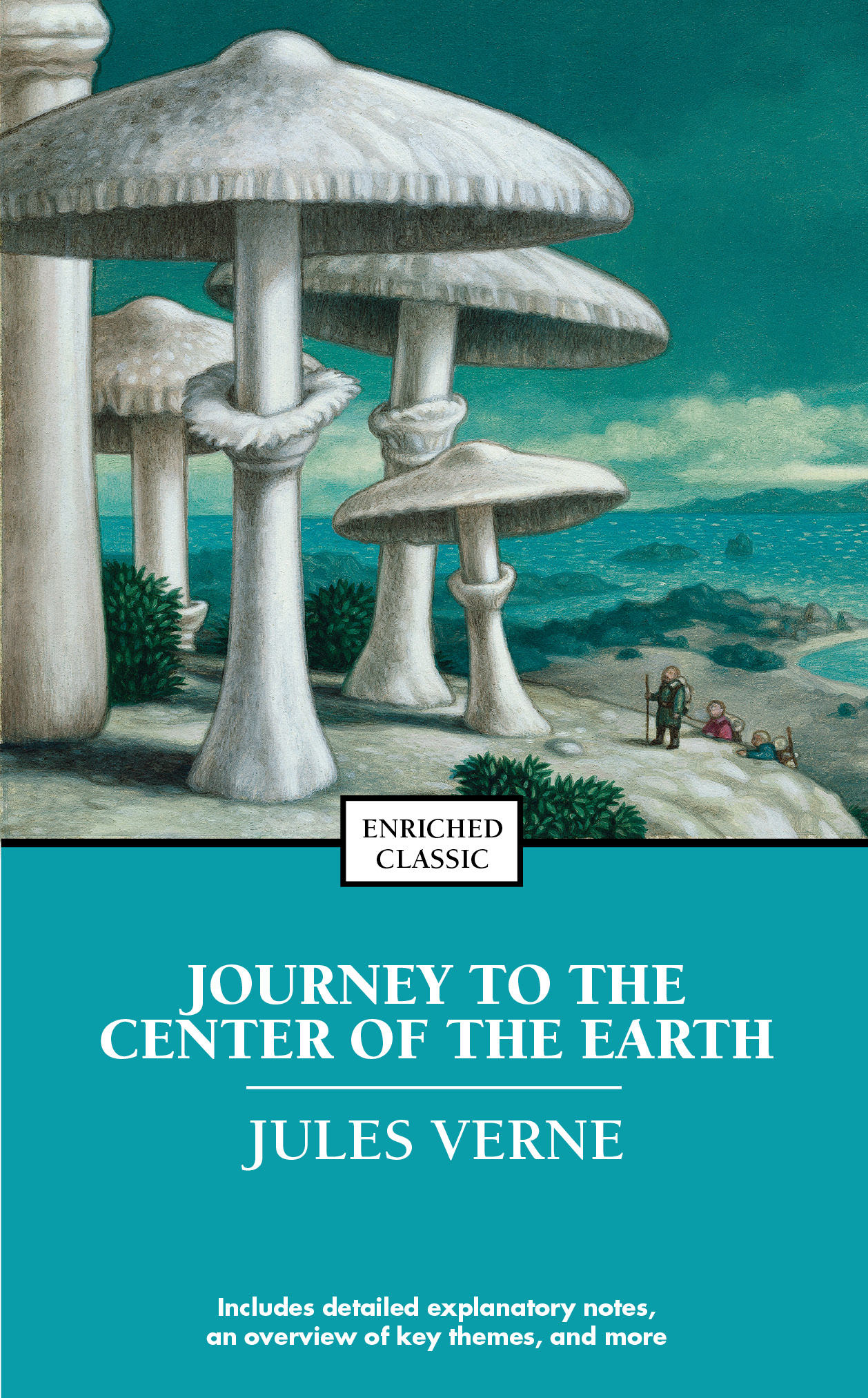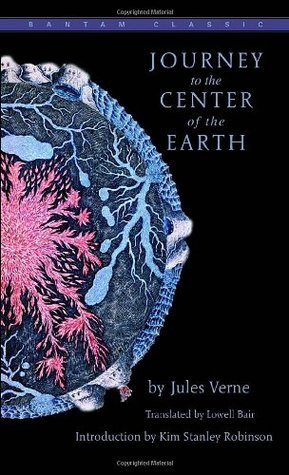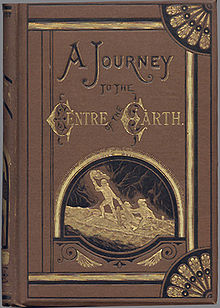“Journey to the Center of the Earth” is a classic science fiction novel by Jules Verne. The 1864 audiobook narrates an adventurous underground expedition.
Jules Verne’s “Journey to the Center of the Earth” captivates readers with its thrilling exploration beneath the Earth’s surface. The story follows Professor Lidenbrock, his nephew Axel, and their guide Hans as they embark on a daring journey through volcanic tubes.
This novel is renowned for its imaginative storytelling and scientific curiosity. The audiobook version brings Verne’s vivid descriptions and dynamic characters to life, making it accessible and engaging for modern audiences. Perfect for fans of adventure and science fiction, this timeless classic continues to inspire wonder and excitement. Dive into this epic tale and experience the wonders hidden beneath our planet.

Introduction To Jules Verne’s Classic
The audiobook of Journey to the Center of the Earth by Jules Verne is a timeless classic. Written in 1864, this novel takes listeners on an incredible adventure beneath the Earth’s surface. Jules Verne’s vision and storytelling have captivated audiences for generations.
The Author And His Vision
Jules Verne was a French novelist known for his imaginative stories. He is often called the “Father of Science Fiction.” Verne had a unique ability to blend scientific facts with fiction. His vision was to entertain and educate his readers. He inspired many to explore the unknown.
Impact On Science Fiction Genre
Journey to the Center of the Earth had a profound impact on the science fiction genre. It introduced concepts that were ahead of its time. Verne’s detailed descriptions and scientific accuracy set a new standard. His work influenced countless writers and filmmakers.
- Inspires curiosity about geology and exploration.
- Combines adventure with scientific theories.
- Encourages readers to think beyond the known world.
The audiobook brings Verne’s vision to life. It allows listeners to experience the thrill of the journey. Whether you are a longtime fan or new to Verne’s work, this audiobook is a must-listen.
Main Characters
The main characters in “Journey to the Center of the Earth” are fascinating. Each one brings something special to the story. Let’s dive into the primary characters of this 1864 audiobook by Jules Verne.
Professor Lidenbrock
Professor Lidenbrock is the driving force of the journey. He is a geology professor in Hamburg, Germany. His passion for science is unmatched. He discovers an ancient manuscript. This leads him to believe there is a path to the Earth’s center. His determination and curiosity push the expedition forward. His character is both inspiring and relentless.
Axel
Axel is Professor Lidenbrock’s nephew. He is initially hesitant about the journey. Despite his fears, he is loyal to his uncle. Axel’s character shows growth and courage. He often provides a more human perspective on the adventure. His relationship with his uncle adds depth to the story.
Hans Belker
Hans Belker is the Icelandic guide. He is calm and resourceful. Hans is essential to the team’s survival. His skills in navigation and survival are crucial. He is a man of few words but many actions. His presence provides a steadying influence on the group.
These characters make “Journey to the Center of the Earth” a memorable adventure. Each one contributes uniquely to the story’s excitement and depth.
Themes Explored
Jules Verne’s “Journey to the Center of the Earth” captivates listeners with its rich themes. The 1864 audiobook explores various ideas that are both timeless and relevant today. Let’s delve into three key themes that stand out in this classic adventure.
Science Versus Fiction
This theme is at the core of Verne’s masterpiece. The story blends scientific facts with imaginative elements. Verne was a pioneer in the science fiction genre. He created a world that challenges our understanding of science. The journey to the Earth’s center involves geological and paleontological elements. Yet, it also stretches the boundaries of what we know. This interplay between science and fiction keeps listeners engaged and curious.
Humanity’s Quest For Knowledge
The desire to learn drives the characters forward. Professor Lidenbrock is determined to uncover Earth’s secrets. His relentless pursuit of knowledge highlights our innate curiosity. This quest for understanding is a universal theme. It resonates with everyone who seeks to explore and discover. The audiobook portrays this quest vividly, making it a central aspect of the narrative.
Nature’s Mysteries
Nature holds many secrets, and Verne’s story dives deep into them. The characters encounter unknown creatures and landscapes. These elements add a layer of wonder and intrigue. The story emphasizes that nature is vast and full of surprises. It reminds us of the endless mysteries waiting to be uncovered. This theme encourages listeners to appreciate and respect the natural world.
The 1864 Audiobook Experience
Listening to the 1864 audiobook of Journey to the Center of the Earth by Jules Verne is an adventure. This experience transports you back in time. Let’s explore its unique features and historical significance.
Narration Style
The narration style of the 1864 audiobook captivates listeners. The narrator’s voice is clear and engaging. Each character’s voice is distinct. The pace is steady and keeps you hooked. The narrator brings out the emotions in the story well.
Bringing The Story To Life
The audiobook brings the story to life vividly. Sound effects add to the experience. You can hear the rumble of underground rivers. The echoing voices in caverns feel real. These details make the journey feel authentic. Listeners feel like they are part of the expedition.
Historical Context Of The Audiobook
Understanding the historical context adds depth to the 1864 audiobook. Jules Verne wrote the book during the Victorian era. This period was known for its scientific curiosity. Verne’s work reflects the era’s spirit of exploration. The audiobook preserves this essence.
| Aspect | Details |
|---|---|
| Year of Original Publication | 1864 |
| Author | Jules Verne |
| Genre | Science Fiction |
Listening to the 1864 audiobook is like stepping into a time machine. You experience the same wonder and excitement as readers did back then.
Challenges In The Journey
The journey to the center of the Earth is filled with many challenges. The adventurers face physical and psychological obstacles. These challenges test their strength and resolve.
Physical Obstacles
Physical obstacles are many in this journey. The explorers must navigate dark caves and narrow tunnels. They encounter underground rivers and vast caverns.
High temperatures and suffocating air make breathing difficult. The path is often treacherous and dangerous. They need to climb steep rock walls. Each step requires great care and effort.
| Obstacle | Challenge |
|---|---|
| Dark Caves | Limited visibility |
| Narrow Tunnels | Claustrophobia |
| Underground Rivers | Strong currents |
| High Temperatures | Heat exhaustion |
| Steep Rock Walls | Risk of falling |
Psychological Struggles
Psychological struggles are also significant. The explorers feel isolated in the dark. The silence of the underground is eerie. They miss the sunlight and the open sky.
Fear and doubt creep into their minds. They question their decisions and their path. The journey tests their mental strength. They must overcome their inner fears to move forward.
- Isolation in darkness
- Eerie silence
- Missing sunlight
- Fear and doubt
- Testing mental strength

Scientific Concepts And Theories
Jules Verne’s “Journey to the Center of the Earth” is more than just an adventure. It explores scientific concepts and theories that were groundbreaking in the 19th century. Verne’s work combines imagination and science in a fascinating way.
Geology And Paleontology
Verne’s story dives deep into geology and paleontology. He describes layers of the Earth with incredible detail. The adventurers encounter ancient fossils and rock formations. These elements showcase Verne’s interest in Earth’s history.
Geology is the study of Earth’s physical structure. It includes the rocks and minerals that form it. Verne imagined the Earth’s interior with great creativity. His descriptions include caverns and underground seas.
Paleontology is the study of ancient life through fossils. Verne’s characters find dinosaur bones and other prehistoric remains. These discoveries add excitement and wonder to the journey.
Verne’s Vision Vs. Modern Science
Verne’s vision of the Earth’s interior was imaginative. Modern science has since revealed more about our planet. Seismic studies show that the Earth’s core is solid and extremely hot. There are no underground seas as Verne described.
Table: Comparison of Verne’s Vision and Modern Science
| Aspect | Verne’s Vision | Modern Science |
|---|---|---|
| Earth’s Core | Hollow with caverns | Solid and extremely hot |
| Underground Seas | Vast and navigable | Non-existent |
| Fossils | Abundant in deep layers | Found near the surface |
Despite the differences, Verne’s work remains influential. It inspires curiosity about our planet. It encourages exploration and scientific inquiry.
Legacy And Adaptations
Jules Verne’s “Journey to the Center of the Earth” is a classic tale. This 1864 novel has captivated readers for over a century. It has left a lasting legacy on literature and media. The story has inspired countless adaptations and interpretations. Let’s explore its influence and modern adaptations.
Influence On Literature And Media
Jules Verne’s imaginative storytelling set a new standard. His work influenced many writers and filmmakers. The novel sparked a wave of science fiction literature. Authors like H.G. Wells and Arthur C. Clarke drew inspiration from Verne.
In media, the book has been adapted into films, TV shows, and games. Each adaptation brings a new perspective to the tale. The story’s adventurous spirit and scientific curiosity resonate deeply.
Modern Adaptations And Interpretations
Modern adaptations of “Journey to the Center of the Earth” are diverse. They range from movies to animated series. The 1959 film adaptation is a notable classic. It brought Verne’s vision to life on the big screen.
More recently, the 2008 film starring Brendan Fraser updated the story. It used modern technology to create stunning visual effects. This version introduced the story to a new generation.
The audiobook format has also gained popularity. Listeners can experience the adventure with immersive soundscapes. This format makes the story accessible to a wider audience.
| Adaptation | Year | Medium |
|---|---|---|
| Film | 1959 | Movie |
| Film | 2008 | Movie |
| Audiobook | Various | Audio |
- Influence on literature: Inspired many science fiction authors.
- Cultural impact: Adapted into various media formats.
- Modern retellings: Keeps the story relevant for new audiences.

Conclusion
The “Journey to the Center of the Earth 1864 Audiobook” by Jules Verne offers a captivating adventure. This timeless classic brings excitement and wonder. Experience the enthralling narrative and rich characters. Dive into this literary masterpiece and let your imagination soar.
Enjoy the journey that continues to inspire generations.


